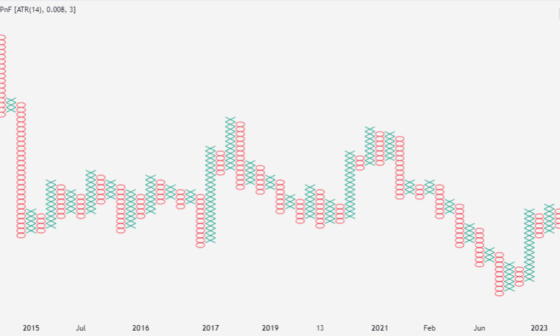In time series, we frequently rely on historical data to estimate current and future values. But this isn’t always enough. When unforeseen catastrophes such as natural disasters, financial crises, or even wars occur, values can abruptly shift. That is why we require models that can use past data as a basis for forecasts as well as swiftly respond to unexpected shocks. One such model, which considers both previous values and past errors when estimating prospective values, is the Autoregressive Moving Average (ARMA) model.
ARMA model is a statistical model that makes accurate estimations about future trends and price behaviors. Forecasting is an important task for many corporate objectives, including predictive analytics, product planning, budgeting, predictive maintenance, and so on. The simplicity of ARMA models is a significant advantage. They just require a minimal data set for forecasting, are very accurate for short predictions, and work with data that does not have a trend.
As we collect more data, Autoregressive Moving Average models will become even more important for understanding and forecasting trends across various industries. Let’s delve into it further to understand how it predicts prices.

Introduction
Time series analysis is the examination of data collected over time to detect trends and make predictions. Many fields use time series data, including finance, economics, environmental science, and engineering. ARMA models are statistical models that are utilized in time series analysis.
Because they are simple yet strong, the ARMA models are popular. Many of the patterns evident in time series data, such as trend, cyclicality, and seasonality, can be captured by them. They can also be utilized to produce precise estimates for future values.
What is a Time Series?
A time series is a set of observations made at regular intervals across time. Observations can be made on anything that varies over time, like stock prices, sales data, or temperatures. The purpose of time series analysis is to recognize patterns and correlations in the data so that prospective values can be predicted.
What is ARMA?
The word ARMA is the short form of Autoregressive Moving Average. It is a statistical analysis model that employs time series data to predict future trends.
A statistical model is considered autoregressive if it forecasts prospective values according to past values. For instance, an ARMA model may attempt to estimate the profits of a business based on past performance or predict a stock’s prospective prices based on past performance.
An ARMA model is a renowned approach for time series forecasting that uses a combination of AR and MA models. The AR is an autoregressive model, and the MA is a moving average model.
An AR model is a linear regression model that predicts future values based on past values of the series, whereas an MA model predicts future values based on past errors.
ARMA models forecast the next value in a time series using previous observations and estimated parameters. The projections are supplemented by prediction intervals, which indicate the degree of uncertainty surrounding the point estimates.
Components of the ARMA Model
The Autoregressive Model
The autoregressive (AR) component of the Autoregressive Moving Average model forecasts a value in a time series utilizing a linear combination of previous values of the series. The expression “autoregressive” refers to a regression of a variable against itself.
An AR model of order p would look like
y_t = c + φ1y_t-1 + φ2y_t-2 + … + φp*y_t-p + ε_t
where y_t represents the current value of the time series, c is a constant, φ1, φ2, …, φp denote autoregressive coefficients, and ε_t is an error term.
The autoregressive coefficients indicate the impact of past values of the time series on the current value. The model’s order, p, denotes the number of past values that were incorporated in the model.
The Moving Average Model
The Moving Average (MA) component of the Autoregressive Moving Average model predicts prospective values by using past errors. The name “moving average” refers to the fact that the model averages previous errors.
An MA model of order q is expressed as
y_t = c + ε_t + θ1ε_t-1 + θ2ε_t-2 + … + θq*ε_t-q
where y_t represents the current value, θ1, θ2, …, θq are moving average coefficients that symbolize the impact of previous errors on the current value. The model’s order, q, indicates the number of previous errors utilized in the model.
Combining AR and MA Models
An ARMA model predicts by combining the AR and MA models. The ARMA model of order p,q would look like
y_t = c + φ1y_t-1 + φ2y_t-2 + … + φpy_t-p + ε_t + θ1ε_t-1 + θ2ε_t-2 + … + θqε_t-q
where yt and yt-1 denote the values of the current period and one period ago, respectively.
Similarly, ϵ t and ϵ t-1 represent the error terms for the same two periods. The error term from the previous period is used to assist us in correcting our projections. We can make a more accurate estimation this time because we know how far off we were with our previous estimate.
C is a constant. We can plug in any constant factor here. If the equation lacks a baseline, we assume c=0.
θ1, θ2, …, θq are moving average coefficients and φ1, φ2, …, φp denote autoregressive coefficients. These coefficients, like in previous models, must be between -1 and 1 to avoid the coefficients from blowing up.
P and q signify the order of AR and MA components, respectively. An ARMA (P, Q) model takes past values up to P periods ago, as well as residuals up to Q lags.
It is critical to recognize that the two orders, P and Q, can but do not have to be of equal value. This is important because the error term (ϵ t-i) or the past value (y t-i) frequently loses significance faster. As a result, many realistic forecasting models use a variety of Autoregressive and Moving Average orders.
Order of the ARMA Model
By now, we understand that the number of previous values and past errors used in the ARMA model determine its order. The order is represented by (p, q), where p represents the AR component’s order and q represents the MA component’s order.
The order of an ARMA model can be established by examining the autocorrelation and partial correlation functions of the series. The autocorrelation function evaluates the association between a value in the series and its previous values, whereas the partial correlation function analyzes the relationship between a value in the series and its previous values after eliminating the effects of intervening values.
Estimating ARMA Parameters
To forecast using the Autoregressive Moving Average model, you must first estimate the model parameters.
This can be accomplished by several methods, including maximum likelihood estimation or least squares estimation.
Maximum likelihood estimation entails determining the model parameter values that maximize the probability of observing the data given in the model.
The likelihood function for an AR MA model is determined by the model parameters as well as the data. The highest probability estimates of the parameters can be determined by maximizing this function through numerical optimization techniques.
After calculating the parameters, you may use the model to forecast future values.
Assumptions of the ARMA model
If you want to use an ARMA model, you must ensure that your data meets the demands of the model – stationarity. To determine whether your time series data is stationary, check that the mean and covariance remain constant.
Besides, if the statistical features of an ARMA model do not vary over time, it is said to be stationary. Stationarity is critical for creating accurate predictions since it assures that the model’s statistical features remain consistent across time.
Furthermore, if an ARMA model can be represented as a finite-order MA model, it is said to be invertible. Invertibility is essential for interpretation since it assures that previous errors can be utilized to forecast future values.
Selecting an Appropriate Order
Choosing the right order for an AR MA model is critical for producing exact forecasts. A model with fewer parameters may fail to detect all of the patterns in the data, whereas a model with excessive parameters can overfit the data and produce inaccurate predictions.
The Akaike information criterion (AIC), cross-validation, and the Bayesian information criterion (BIC) are all methods for determining the optimal order of an ARMA model.
Predicting Prices with an ARMA Model
Once you have estimated the parameters of an ARMA model, you can use it to predict future prices. Let us go through the steps briefly for predicting prices using the ARMA model:
- Data Preparation: Gather historical data for the commodity or asset whose price you want to forecast. Make sure that the data is stationary, which means that its statistical qualities do not vary over time. Consider differencing if the data is non-stationary.
- Choose the Appropriate Order for the Model: Determine the correct orders (p and q) for the Autoregressive Moving Average model. This entails examining autocorrelation and partial correlation plots to find lags that have a substantial impact on the current value.
- Compute the Constant Coefficients: Determine the model parameters, such as the autoregressive (ϕ) and moving average (θ) coefficients. This is usually accomplished with statistical software or programming languages such as Python and convenient libraries like Statsmodels and Pandas. We can find the best-fitting autoregressive model for any given data set using them.
- Model Evaluation: Evaluate the model’s goodness of fit by examining residuals, screening for white noise terms, and running statistical tests to confirm that the model appropriately represents the underlying patterns in the data.In the case of residuals, check if they are uncorrelated. If that’s your situation, then congratulations! You have the ARMA(p,q) model for your time series. If not, re-estimate your model by adjusting p and q until you discover a model with uncorrelated residuals.
- Forecasting: Once the model has been observed and estimated, you may use it to forecast future prices. Forecasted values are derived using approximated ARMA model parameters and historical data.
- Monitor and Improve: Continuously check the model’s performance and modify it as needed. Time series data can be impacted by external variables, and the model can need repeated revisions to remain correct.
Limitations
While the ARMA model is useful for price prediction, it has limits. It is based on the assumption that the underlying data adopts a linear pattern and could miss non-linear relationships or unexpected shifts in market conditions. Furthermore, it may fail to take into consideration external influences or market sentiment, which can have a significant impact on prices.
What is the Difference between ARMA and ARIMA Model?
The Autoregressive Integrated Moving Average model, also known as the ARIMA model, is quite similar to the ARMA model except one additional factor known as Integrated (I), i.e., differencing, which stands for ‘I’ in the ARIMA model. So, the Autoregressive Integrated Moving Average model is a mix of several differences that have already been applied to the model to make it stationary, the number of prior lags, and residual errors to forecast future values. It has three components – AR (Autoregressive), I (Integrated), and MA (Moving Average).
Conclusion
The Autoregressive Moving Average (ARMA) model is a useful tool for price prediction in a variety of financial and economic scenarios. The ARMA model, which combines autoregressive and moving average components, provides a structure for modeling time series data and generating informed predictions. However, it is critical to realize its limitations and use it alongside other analytical techniques to produce more accurate price estimates and perform time series analysis.





